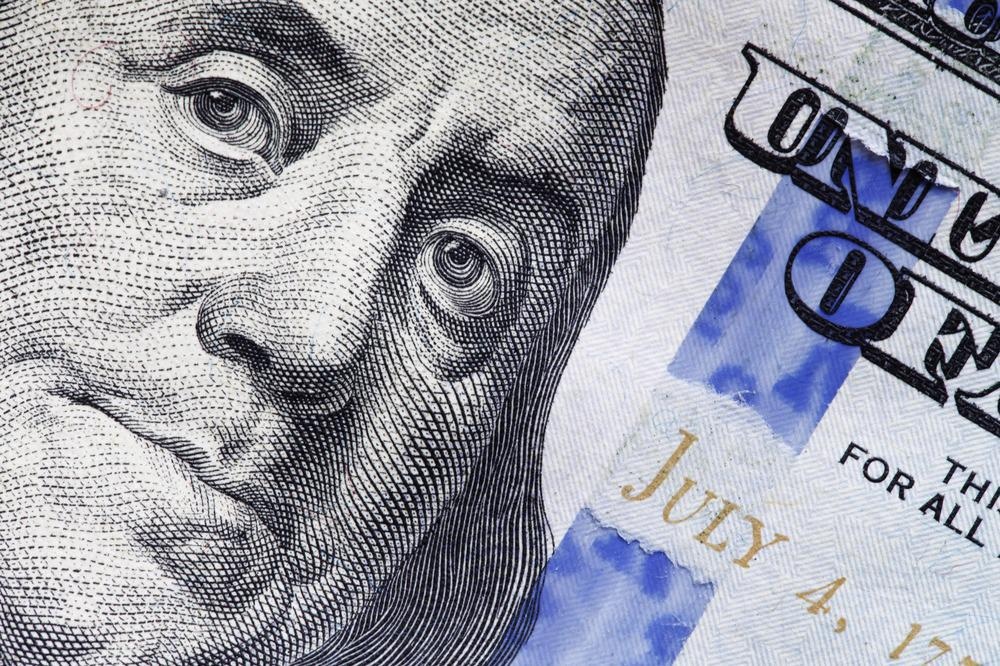In a study published recently in the journal ACS Applied Materials & Interfaces, researchers have developed a new film that can help to enhance anticounterfeiting strategies.

Study: Upconversion Nanoparticle-Integrated Bilayer Inverse Opal Photonic Crystal Film for the Triple Anticounterfeiting. Image Credit: HOMONSTOCK/Shutterstock.com
Benefits of Anticounterfeiting Characteristics
From the perspective of big data and artificial intelligence, information security is becoming extremely critical.
Polymers with diverse anti-counterfeiting characteristics have gotten a lot of interest because they function by altering the external stimuli, such as warmth, humidity, or activation source, to produce alternative signal responses.
Optical anticounterfeiting, involving structural hues and fluorescence, is visible to the human eye and, as a result, is frequently employed in our daily lives.
Photonic crystals (PCs) are attractive possibilities for safety components due to the periodical dielectric constant fluctuation, which can limit the occurrence and reflectivity at certain wavelengths. By adjusting the lattice dimensions, basic components, effective refractive index, and viewing angles, the multilayer knowledge encoded by the architectural colors of photonic crystals may be modified.
In recent times, some researchers developed a moisture cholesteric liquid crystalline network-based photonic crystals anticounterfeiting mechanism that can identify the projected signal under various circular polarizing filters.
Rather than providing functional monomers, multi-layered photonic crystals with diverse information representations may readily implement numerous anti-counterfeiting. Nevertheless, the anti-counterfeiting capabilities of photonic crystals based on functional colors cannot be used in a dark environment where natural light must be modulated.
Benefits of Upconversion Luminescence
Illumination, another typical optical signal, played a vital role in anticounterfeiting. Upconversion luminescence (UCL) is a pro-shifting phenomenon that uses a multiphoton mechanism to transform unseen near-infrared (NIR) light into the visible region.
Various light colors, decaying durations, or stimulation frequencies are commonly used as the basic elements for information coding, particularly for high secure anti-counterfeiting.
A cell phone acknowledgment upconversion luminescent 3D rapid response (QR) code, for instance, as well as a variety of anti-counterfeiting tags dependent on multicolored upconversion microspheres inks, have been created and fully documented.
Surprisingly, luminescent indicators can accomplish all-weather anticounterfeiting benefits, particularly in low-light conditions. However, the low fluorescence strength of upconversion nanoparticles, which is constrained by the host matrix, crystalline structure, and volume, has hindered their future anticounterfeiting uses.
Photonic crystals are potential material candidates for manipulating the upconversion luminescence in combination with the core-shell method or using near-infrared desensitized nanomaterials to induce luminescence augmentation.
When the upconversion nanoparticles are positioned on the exterior of the photonic crystals, the photonic crystals can specifically mirror the production or stimulation light at a particular frequency situated on the matching PSB to improve brightness.
Most scientists, however, employ the reflecting effect of photonic crystals to boost luminosity while paying less attention to their architectural colors. As a result, building a novel structure merging upconversion nanoparticles with photonic crystals to synergistically blend structural colors and improve luminosity would significantly enhance their anti-counterfeiting capacity.
UCNP Based Approach
Hydrophilic adapted upconversion nanoparticles integrated polymeric bilayer inverted optical photonic crystals (IOPC/MUCNP) film with threefold anticounterfeiting properties was created in this study.
To increase the luminosity, upconversion nanoparticles were placed on the surface of the optimised multilayer inverted optical photonic crystals with double PSBs, which were well aligned with the emission spectrum and activation spectrum of adapted upconversion nanoparticles.
On average, the architectural colors of the photonic crystals were detected in shiny angles; nevertheless, acute dispersion spectra caused dazzling and directed architectural colors that showed in nonspecular corners when the PSB was positioned in the near-infrared area.
The improved brightness and Janus architectural colors on two sections of the film demonstrated the film's threefold anticounterfeiting capabilities.
Important Findings of the Study
A bilayer film with improved upconversion luminescence was created and used in triple anticounterfeiting in this study.
At various view angles, reflection structural colors from green to blue on the front and scattered colors from red to blue on the backside of the film were detected for the "808 + 540" architecture. Moreover, the 808-layer with PSB1 meeting the spectral range and the 540-layer with PSB2 fitting the emissions of UCNPs resulted in a 15.7-fold increase in higher wavelength.
The improved luminosity and asymmetrical architectural colors provide the layered material with all-weather triple anticounterfeiting capabilities.
This project showed the outstanding potential of bilayer photonic crystals for light manipulation, opening up new avenues in the realm of safety components with numerous anticounterfeiting capabilities.
Reference
Meng, Z., Wu, Y., et al. (2022). Upconversion Nanoparticle-Integrated Bilayer Inverse Opal Photonic Crystal Film for the Triple Anticounterfeiting. Applied Materials & Interfaces. Available at: https://pubs.acs.org/doi/10.1021/acsami.1c25059
Disclaimer: The views expressed here are those of the author expressed in their private capacity and do not necessarily represent the views of AZoM.com Limited T/A AZoNetwork the owner and operator of this website. This disclaimer forms part of the Terms and conditions of use of this website.